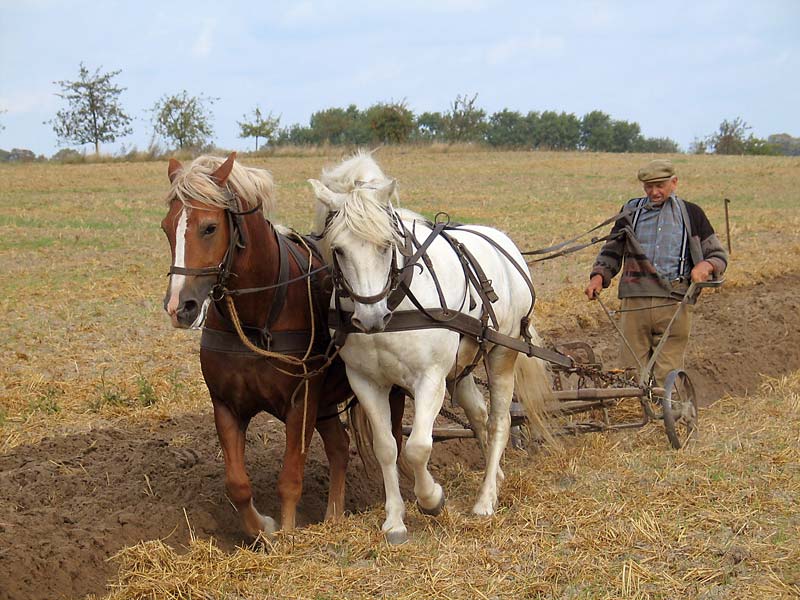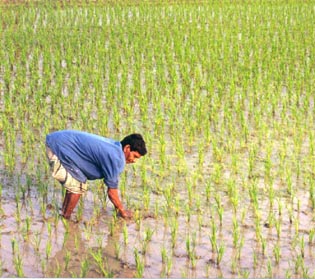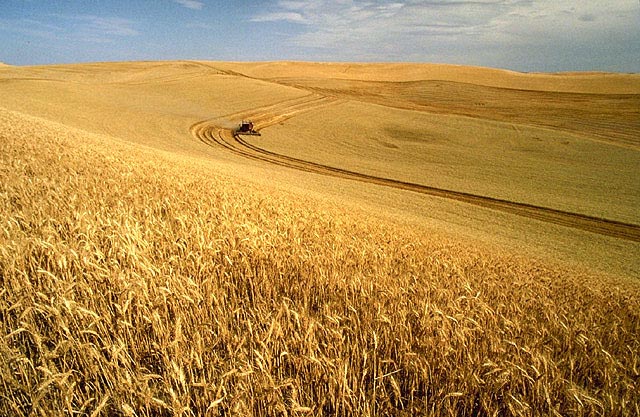Commodity Certificates and Transparent Government
 As I wallow in the commodity title of the 2002 Farm Bill and cover those materials with my students, we come to commodity certificates. And I am reminded of how government really works.
As I wallow in the commodity title of the 2002 Farm Bill and cover those materials with my students, we come to commodity certificates. And I am reminded of how government really works.The basic point of the following discussion is to explain one instance in which government has overridden one of the payment limitations of the farm bill with a mechanism that did not expose the underlying policy to debate and did not expose the government to criticism. The post is longer than I'd anticipated, but I think the mechanical complexity of the farm program's loan structure and Congress's commodity-certificate solution nicely illustrate how transparent government action can be.
First, some background.
In the 1996 Farm Bill, Congress set up payment limitations for, among other things, marketing assistance loans. These loans are non-recourse loans, they are secured by the producer's crop, and they allow producers to borrow money at a particular loan rate (stated in terms of the commodity's price). During the loan, or when the loan matures nine or ten months after harvest, producers have the choice of either paying the loan off at current market price levels (i.e., the "posted county price"), forfeiting the crop to the government, or paying the loan off at the loan rate. If market prices are high, producers will pay off at the loan rate and take their grain into the market. If market prices are low, producers will pay off the loan at the market level (the posted county price) and hold the grain hoping for the market to rise, or sell it immediately in the market, content with the gain they experienced as a result of paying less to retire the loan than they originally borrowed.
Under the current regime, the forfeiture option really only comes into play as a result of the payment limitation. The payment limitation, in turn, only comes into play when market forces are low. That is, if the producer pays off the loan at a low market rate--a rate less than the original borrowing rate, she experiences a gain (the difference between the borrowed funds and the funds repaid to retire the loan). That gain cannot exceed $75k per person per year. But when the producer approaches the maximum level of marketing loan gain, she still has a money-making option. She can forfeit the grain to the government. So, if the market is low, and the producer has already gotten $75k worth of marketing loan gain from the government, then she will choose to forfeit the grain to the government. Notice that she still experiences economic gain. That is, she forfeits collateral that was insufficient to cover the amount borrowed. But that economic gain does not count toward the producer's gains for purposes of payment limitations. So the payment limitation has the effect of pushing more grain into the government's hands when market prices are low.
Government stocks of grains pose problems. If producers forfeit a bunch of collateral to the government under the loan program, the government is left holding the bag. It can distribute some of that through food programs; it can try to dump some of it into foreign markets (though that poses trade problems); or it can hold it and wait for the market to rise. Of course the anticipation of government sellers exerts some degree of downward pressure on the market. And when the government enters the market and sells large quantities of commodities, the increased supply lowers prices. Those lower prices, in turn, could cause more forfeitures. So the government doesn't want to amass big stocks of grain.
Enter, the Commodity Certificate.
In the late 90's, market prices went in the tank, and the government was looking at amassing big stocks of grain under the marketing assistance loan program because the payment limitation was in play. What did Congress do? Did it debate new payment limitation levels? No. Rather, it created "commodity certificates." Using these figurative instruments, producers were allowed to, in effect, retire the loan and redeem the grain at low market levels, retain the gain from the loaned funds, and not experience any gain that would count toward the payment limitation.
Here's what happens (in theory—all of this is actually accomplished through a set of bookkeeping entries):
Producer takes out a loan from the government for $1.98/bu. on 100,000 bu. of corn. He gets $198,000 from the government and posts the 100,000 bu. of corn as collateral. When the loan becomes due (or sometime during the loan term), the posted county price is $1.75. If he had room under his payment limitation, he would pay off the loan at the posted county price, which would mean he would pay $175,000, take his grain, and be ahead $23,000 (the difference between the original loan funds and the amount he actually paid back). But if he has reached his payment limitation (already collected $75,000 from the government in other gains), then he will forfeit the grain. That is, he will walk away with only the $23,000 (the difference between the original loan funds and the value of the grain he forfeits to the government). But the government doesn't want the grain. Thus, the commodity-certificate two step comes in.
I conceptualize this dance as having two steps, or transactions. Picture our farmer, after having borrowed $198,000 from the government and posting 100k bu. of corn as collateral. Here's how the dance works. First, the farmer retires the outstanding loan by paying it off at the original loan rate (actually interest is involved too, but lets keep it simple), and thereby has his grain unencumbered by the government's interest. But he has gotten no subsidy from the government, and is holding grain worth $175,000 ($1.75 corn). So the government buys the grain from him with the funds he has just given it. That is, it pays $198,000 (+ interest) for the grain. This completes what I call the first step: The farmer retired the loan by paying the government back, and the government used that payment to buy the grain from the farmer.
At this point, the farmer is pretty happy. It is as if he has forfeited the grain (or sold it to a seller that buys at greater-than-market prices). But the government doesn't want the grain. This is where the commodity certificate comes in--the second step. The farmer next buys a commodity certificate from the government at the market level. Thus, the farmer pays the government $175,000 for a certificate for 100,000 bu. of corn. Then the farmer redeems that certificate for the grain that the government has been holding. In the end, the farmer has experienced the same gain as he would have experienced had he been allowed to pay the loan off at the lower market price (i.e., as if there were no payment limitation).
Transparency?
To recap: the farmer got $198,000 from the government when he took out the loan. Then he paid the government $198,000 (+ interest), and the government paid him $198,000 (+ interest) for the grain. Then the farmer paid the government $175,000 for a commodity certificate. And the government gave him 100,000 bu. of corn for the commodity certificate. So what is the farmer left with? What is the economic net? It is the exact same result as if the farmer had walked in and paid off the loan at the market rate: $23,000 worth of gain and 100,000 bu. of corn to sell in the market. But none of that gain counts toward the payment limitation, and the government is not saddled with the grain.
So it's a win-win right? For the farmer and for those who worry about government stocks, yes. Indeed, I've heard it said that this program saves the government money. So it may indeed be a win-win. But what about Sue Taxpayer who wants to know about what her government is doing. Do you think she understands that Congress, through this program (which remains in force in the 2002 Farm Bill), effectively removed the payment limitations on marketing loan gains? Would she like to hear Congress tell her why $75,000 in government aid is not enough for a producer who is participating in the marketing assistance loan program? I think she would. And could such a debate bring deeper questions to light? I think so.
Of course, the answer to the is-$75k-enough question it is difficult. And the way I frame that question reflects an interesting aspect of payment limitations--they bring large numbers to light that, when considered by the large majority of would-be voters, seem like entirely too much of a government handout. But with capital-intensive industries like agriculture (which may or may not be something that our farm policy wants to encourage), the electorate's knee-jerk frame of reference--individual earnings--may not be accurate. Of course, that is no reason to shield the issue from debate. Indeed, it may one very good reason for debate.
Another interesting aspect of the problem is that marketing loans, even without commodity certificates, aren't necessarily limited to $75,000 of economic gain. Farmers experience more than $75,000 of gain under marketing loans when they forfeit the grain to the government after reaching the $75,000 limit. And the gain from forfeitures doesn't count toward the payment limitation. So maybe we simply aren't all that concerned with a $75,000 payment limitation. Maybe, then, from its inception, the payment limitation wasn't really geared at limiting payment.
But one may posit (from the very existence of something called a payment limitation) that the $75,000 payment limitation should act as a limit on economic gain. And there are arguments to the contrary--maybe $75k is not enough. But excluding some gains from the mix (primarily through commodity certificates) allows the payment-limitations proponent to get the limit, while at the same time insulating producers from the real effects of the limitation. And when a confusing mechanism like commodity certificates is used to do it, one has to wonder about the transparency of policymaking.
When payment limitations come up in the '07 bill, and they will, it will be interesting to see if Congress takes up the issue. Pending bills to repeal the commodity certificate authority have been introduced over the past couple of years, but they haven't seen success. And I haven't seen anyone mention them in the recent debate on the farm bill. But Congress knows about the problem. The issue was identified for Congress in the 2003 Commission on Payment Limitations report. If commodity certificates do fall to political pressure, it will be interesting to see if the other side can garner support for higher payment limits on true economic gain. And, in the course of that argument, I hope we can get to deeper questions about how much producers need and what our policy should encourage. But, one step at a time.
Many thanks to Professor Kelley for conversing with me about this interesting aspect of farm policy.
[+/-] Expand/collapse this post










0 Comments:
Post a Comment
<< Home